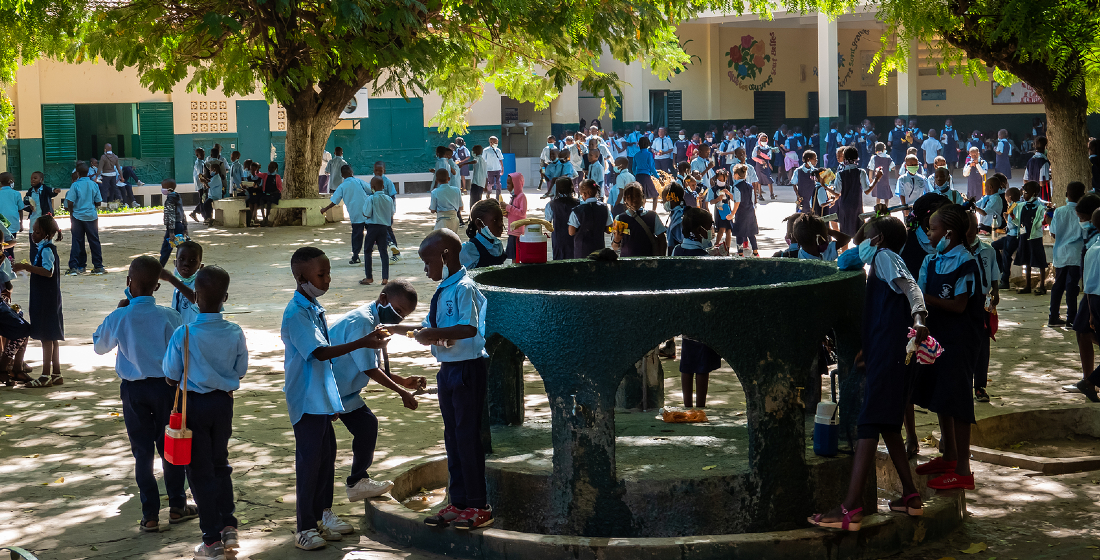Chasing DFI infrastructure cash
Given the vast Covid-19 relief packages they are putting together, are DFIs really in a position to play a bigger role than usual in planned infrastructure stimulus packages that are being proposed by governments to get the global economy back on track?

As the devastating Covid-19 pandemic continues its path of destruction across the globe, multilateral development banks (MDBs) have rushed to provide crucial aid to some of the sectors worst hit by the fallout of coronavirus. However, much of this support falls within MDBs’ usual budgetary limits and the prospect of substantial increases to MDB capital from critically indebted governments is unlikely. With MDBs trying to manage Covid-19 recovery alongside their usual lending commitments, is the world facing a deepening infrastructure funding gap?
MDBs have certainly unleashed their balance sheets to shore up vulnerable sectors, with many MDBs’ lending portfolios directly pivoting towards Covid-19 relief. The support takes many forms such as fast-disbursing policy-based loans across a wide range of sectors, liquidity lines to banks and utilities, guarantee funds, and other short-term and long-term lending instruments.
The World Bank Group has allocated a colossal $160 billion to coronavirus recovery over the next 15 months via the IBRD, IDA, MIGA, and the IFC. The IBRD and the IDA are dedicating a significant part of their available capital to the healthcare sector.
The IFC has $8 billion at its disposal, $2 billion of which is dedicated to supporting existing clients in the infrastructure, manufacturing, agriculture, and services sectors, while the other $6 billion is intended to assist the banking sector. Referring to this financial sector investment, Linda Munyengeterwa, the IFC’s regional industry director of infrastructure for the Middle East and Africa, says: “We appreciate that providing liquidity to SMEs and MSMEs is critical to the post-Covid recovery, so it was important for us to ensure that a large portion of our Covid facility was devoted to helping financial institutions continue lending to those businesses.”
The EIB has created the following relief measures: €10 billion of additional working capital through liquidity lines to banks, €10 billion of loans to SMEs, €8 billion of guarantee schemes, €5.2 billion of EIB financing for non-EU countries, and €5 billion of funding for healthcare, including coronavirus vaccine development. The EIB also intends to mobilise €200 billion of investment via a €25 billion guarantee fund set up by EU members. Similarly, the EBRD has unveiled a €21 billion Covid-19 support package, which includes a Vital Infrastructure Support Programme (VISP).
Other Covid-19 support packages include the following: a $13 billion crisis recovery facility from the AIIB; $20 billion from the ADB including grants, technical assistance, loans, and private sector assistance; an increase in lending capacity from $5 billion to $7 billion from IDB Invest; and an increase in the €3 billion lending capabilities of the NIB through a €1 billion response bond and a SEK4 billion (€382 million) response bond. This is not an exhaustive list, but it gives an idea of the type of action taken by most MDBs.
Does the impact of Covid-19 risk an MDB infra funding shortfall?
It is important to make the distinction between a shortfall in infrastructure investment from multilateral DFIs and a shortfall in the capital allocated to or held by these DFIs. It is improbable that MDBs will face funding difficulties themselves, but their budgets might very well not have the elasticity to include Covid-19 relief and all their usual infrastructure commitments. As Alexis Smith-Juvelis, a director at S&P Global Ratings, notes: “One could argue that with Covid-19, sovereign resources are scarcer and that could potentially translate into more difficulty in executing capital increases. But one would have to weigh that against how MLIs [multilateral lending institutions] have reframed capital management decisions over the past few years. Some institutions have built-in capital increase discussions in their very capital management frameworks, others are more self-sustaining. We will have to see how that plays out with fiscal pressures overall.”
Essentially, MDB funding usually functions in one of two ways. Periodic capital increases from shareholders can be mandatory and a foundational part of the how the MDB in question operates. This applies particularly to MDBs that lend below commercial rates, necessitating recapitalisation. For example, the IBRD and the IFC received a $13 billion capital increase in 2018, while the AfDB acquired $6.9 million in 2019. A less common alternative applies to MDBs like the EBRD, which lend at commercial rates and have, for the most part, to be self-sufficient without capital increases.
In both cases, MDBs have fairly secure sources of funding, short of drastic action by shareholders to terminate capital contributions, which is extremely unlikely. What is clear, however, is that MDBs have financial boundaries within which they must remain. Even MDBs that can expect recapitalisation are required to maintain strong capital bases. Capital increases are not especially frequent and are subject to complex, lengthy negotiations. MDBs must, therefore, be able to stand on their own two feet in the intervening time without recourse to shareholder funds. Additionally, it is partially the continued existence of solid capital bases that results in MDBs’ prized triple-A ratings. These ratings, in turn, allow them to raise capital at a very low cost on the capital markets – another key source of MDB funding.
Smith-Juvelis makes a second, crucial point concerning MDBs’ Covid-19 recovery measures, saying: “The response to Covid-19, with the repositioning of many MLIs’ portfolios, really reflects the type of lending they would have done had Covid-19 not materialised, but with a different sectoral focus on the lending portfolio.”
This does not apply to all MDBs, some of which have raised their lending capacity – for example the EIB’s borrowing limit has been raised by €5 billion to €70 billion. However, Smith-Juvelis’ point is that while MDBs are doing an admirable job of combatting the socio-economic consequences of Covid-19, their response – generally speaking – is a re-orientation of funds and not a substantial increase in lending capacity. MDBs must manage their capital relatively conservatively to maintain high ratings and the trust of their shareholders. As a result, their lending decisions must be taken with both eyes on the size of their balance sheets.
It is self-evident that focussing MDB lending portfolios on Covid-19 is the right decision, given the severity of the pandemic’s threat to global economies and health. Nevertheless, given that MDBs account for as much as 10% of the world’s infrastructure investment, it should serve as a cause for concern that the ability of these institutions to invest in long-term infrastructure development will be compromised while the multi-faceted funding demands of Covid-19 ties up their capital.
Viewed from just about any angle, the outlook for the 2020 global economy is dire. The World Bank expects the global economy to contract by 5.2% in 2020, with the OECD forecasting that Covid-19 will expunge $7 trillion from the world’s economic output. In addition, the Institute of International Finance (IFF) indicates that global debt issuance in the second quarter of 2020 alone was around $12.5 trillion, with government debt making up 60% of that figure. Simply put, infrastructure needs funding that the indebted governments of countries with anaemic economies are ill-placed to provide.
Jangping Thia, a manager in the economics department of the AIIB, issues a stark warning about infrastructure development, saying: “Firstly, debt levels will rise, reducing fiscal headroom for governments. Secondly, economic recovery is likely uncertain and uneven. Thirdly, pressures on consumption type spending on healthcare and social benefits will remain high, to cushion economic hardship. Fourth, it will be harder for governments to undertake reforms in this difficult period, such as raising electricity tariff or removing subsidies.”
Within this context, the IFC has identified significant threats to the water and sanitation, waste, logistics, power, telecommunications, and aviation sectors both during and after Covid-19 – and those sectors are by no means the only affected areas. Infrastructure development is desperately needed and constitutes an obvious route to economic healing, generating revenue, taxation, jobs, and the long-term foundations for growth.
With governments under severe fiscal strain, MDBs can offer some solutions to the problem. The first is prioritising projects according to necessity. MDBs will need to concentrate lending on projects that absolutely require DFI support to secure financing and not on projects where such support would merely grease the project financing wheels. Some of the most valuable projects will be those that can find an intersection between short-term coronavirus aid and infrastructure that will endure to provide future economic benefits.
Some MDB investment is already following this trajectory. The NIB’s €70 million loan for upgrades to the Vilnius, Kaunas, and Palanga airports in Lithuania assists a sector decimated by Covid-19 travel restrictions while preparing Lithuania for a post-coronavirus economic environment. Similar financings include the ADB’s $200 million loan for upgrades to Uzbekistan’s power sector with a view to encouraging competition and private investment, as well as the World Bank’s $300 million investment in education, health, water and environment, and micro irrigation in Uganda through the Uganda Intergovernmental Fiscal Transfers Program for Results. Projects like this that combine Covid-19 recovery with opportunities for growth will need to be prioritised.
Two other avenues for additional MDB funding include bonds and blended finance. Appetite for bond issuance by MDBs following the 2008-2009 recession remained fairly strong, which might indicate similar demand during the current crisis. Currently, MDBs can also borrow cheaply, given that interest rates are at an all-time low.
While additional funds raised on the capital markets will certainly be useful, bonds are raised against MDBs’ existing capital and will likely have been factored into MDBs’ envisaged lending capabilities. Even if demand remains strong, there are limits as to how much can be borrowed.
Blended finance could thus have a greater role to play in infrastructure investment. This usually takes the form of a direct grant to a project from a donor fund that reduces an MDB’s Capex on a project, or of a guarantee on the project from the donor fund alongside MDB lending. Data from non-profit group Convergence shows, however, that since 2014, blended finance contributions have languished at around $20 billion, which is well below the UN’s 2015 goal of $100 billion by 2020. There is a way to go if blended finance is ever going to make a substantial contribution in bridging any infra funding gap.
Finally, a significant area of MDB support that is particularly valuable in a fiscally constrained environment is the advisory services that many MDBs offer to governments for PPP projects. As Gema Sacristan, chief investment officer at IDB Invest, notes: “Public-Private Partnerships play an increasingly important role in development finance and I believe that they are particularly relevant during and in the aftermath of the pandemic.” MDB advisory services often involve non-refundable grant money given by shareholder countries to an MDB for technical, legal, and financial advisory services. Another method, used by the EBRD, involves internal MDB funding being used to prepare a bankable PPP project with some government cost sharing, after which the successful private sector bidder reimburses the MDB in question.
Whatever the method, helping governments to mobilise private sector capital has to be a central tenet of how MDBs work. In 2019, before Covid-19, the Institute for the Study of International Development estimated that there was a $1.5 trillion infrastructure funding gap in relation to achieving the UN’s sustainable development goals. Neither MDBs nor governments currently have the resources to fill this gap alone and stimulating private sector growth is essential to post-coronavirus economic rehabilitation. In any event, a shortfall in infrastructure investment is probably inevitable and the plethora of planned infrastructure-led stimulus packages announced by cash-strapped governments around the world cannot rely solely on DFI support to meet their ambitious targets.





